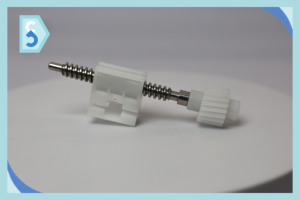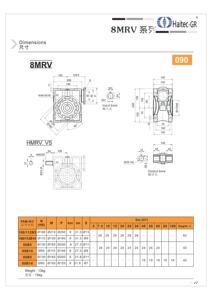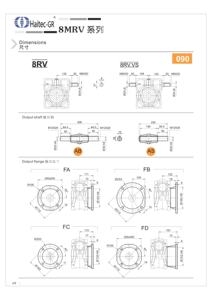
All categories
Featured selections
Trade Assurance
Buyer Central
Help Center
Get the app
Become a supplier

(18314 products available)



















Market Overview: The global gear manufacturing market, which includes custom worm gears, was valued at approximately $80.0 billion in 2023 and is projected to reach $131.4 billion by 2032, reflecting a compound annual growth rate (CAGR) of 5.7% from 2023 to 2032, according to Research and Markets. This growth is primarily fueled by the booming automotive sector and the increasing demand for high-performance industrial gears. The automotive industry alone accounted for the largest market share, highlighting the crucial role of custom worm gears in various applications, such as transmissions and heavy-duty machinery. Furthermore, the rise in renewable energy initiatives is expected to drive demand for custom worm gears in wind turbines and solar tracking systems, showcasing the product's versatility across different sectors.
Regional Insights and Consumer Behavior: Asia Pacific emerged as the largest market for gear manufacturing, driven by rapid industrial automation and the growing production of passenger and commercial vehicles. The region's demand for custom worm gears is expected to expand significantly due to these trends. Consumer behavior is shifting towards precision and reliability in machinery, leading to a heightened focus on custom solutions that meet specific operational needs. The distribution channels for these products are also evolving, with an increasing preference for online platforms like Alibaba.com, which facilitate easier access to a diverse range of suppliers. As companies strive to optimize performance and efficiency, the adoption of custom worm gears in industries such as construction, automotive, and energy is expected to rise, further solidifying their market presence.
A worm gear is a type of gear consisting of two parts: the worm and the worm wheel. They assist one another in providing low-speed and high-torque applications. They are used in machines to change the direction and amount of force. The custom worm gears are used widely because of their compactness and ability to provide high reduction ratios.
A common application for worm gears is in heavyduty machines and equipment like lifting devices, hoist, winches, and automobiles. Designs for a worm gear can provide an angle of approach of 90 degrees, which is useful in tightening connections between bolts and nuts. They are helpful in places where user needs to achieve smooth and quiet operations.
Worm gears work as unit reducers to slow down the speed of motors. It is then transformed into torque to drive or lift an object. One benefit of recreational riders using a worm gear bike is easy pedaling, even when traveling long distances. Another example is an electric motor's rotation reduced to increase the torque of a bicycle pedal is achieved using a worm gear.
Worm gears come in different types:
Spiral worm gear:
A spiral worm gear consists of threads that look like spirals. Teeth cuts on the worm apply force in an axial direction. The axial direction makes it easier to mesh with the worm wheel. When both rotate, they provide smooth, quiet operations. The efficiency of a spiral worm gear is about 50 to 90%. The high-efficiency rate makes them suitable for machines requiring gradual speed reduction.
Cylindrical worm gear:
This traditional type of worm gear has uniform threads around the cylindrical body. The threads work like itches, and the meshes with the gears offer high torque reduction. Use a cylindrical worm gear in applications like conveyor belts, elevators, and reducers.
Non-friction cylindrical worm gear:
A non-friction cylindrical worm gear is a modification of cylindrical worm gears that reduces friction between the gear pairs. The gear offers better torque transmission and efficiency in high-load applications. Manufacturers use them in robotics, machine tools, and high-precision equipment.
Zero backlash worm gear:
When torque is transmitted, there is no torque gap between the axles in a zero-backlash worm gear. They provide precision motion control where accuracy is important in machines like CNC machining, medical instruments, and robotics.
Wheel worm gear:
A worm gear driving a gear is called a wheel worm gear. The gear can be small or big, and the driving ratio is high. The setup is mostly used in gear reducers and high-torque applications.
Size
Worm gears come in different sizes. Their sizes determine the amount of torque and power transmission they can handle. Larger worm gearクラッチ and shaft sizes can handle higher torque and power. Smaller ones are suitable for lighter applications. For custom worm gears, the size will depend on the specific industry application. Coppersmiths, machinists, and engineers usually determine the size and fit the gear to the required standards during manufacturing.
Material
The material for making custom worm gear drives affects their performance and durability. Many materials can make the gear, but it is crucial to choose one that will last in the application environment. Metal alloys offer strength and longevity. They are great for industrial use. Brass has good wear resistance, and plastic allows quieter operations are great for light uses. The choice of coating improves performance, too. Hard anodized coating improves wear resistance. Powdered metal improves load capacity, while teflon enhances operational efficiency.
Design
Worm gears can have different designs, affecting how they transmit power and torque. The gear can have different tooth patterns, such as square or circular. Each tooth pattern has a different pitch diameter, improving efficiency or quiet operation. Other variants include the single, dual, and triple-thread designs. Single-thread designs improve torque but are slower. Triple-thread designs transmit more power at higher speeds but reduce efficiency.
Lubrication
For custom worm gear drives to perform optimally, they need regular lubrication. The lube reduces friction between the teeth and the bearings, which can wear out rapidly. Lubricate all exposed parts carefully to reduce friction and heat build-up. Use the right type of grease or oil to prevent overheating. During lubrication, ensure there is no dirt or contamination inside the parts.
Clean and inspect
Cleaning and lubrication is an important part of custom worm gear maintenance. Manufacturers advise users to clean exposed parts regularly. Remove dirt, debris, and old grease. Then, inspect the gear parts for signs of wear or damage, such as pitting or scoring on the teeth.
Replacement
Some parts of the worm gear will wear out with constant use, even with regular cleaning and lubrication. Custom gear replacement parts ensure the entire mechanism functions properly. Replace bushings, bearings, and lubricant regularly, depending on how often the gear is used. It helps to establish a maintenance schedule depending on the application to avoid downtime and constant replacements.
Worm gears can be applied across a wide range of situations, especially in industrial and automotive applications. Some popular application scenarios of worm gears include the following:
Automation Industry:
Worm gears are commonly used in machines for the automation industry. These gears help control torque and movement in automated systems and machines. For example, in robots or assembly line gear boxes, they are often found in there. Worm gears allow these machines to precisely control how each part moves. It also makes sure that the machine can endure heavy use. This means that even though automation machines work a lot, worm gears can still be used for a long time without breaking easily.
Machinery Industry:
In the industry that makes more machines, worm gears help very big machines move and work right. They are used in important parts like gear reducers and feeding devices. Additionally, worm gears reduce the speed of motors, making it easier for them to drive bigger machines. They can also make bigger machines more accurate and strong by increasing the torque of the motors attached to them. The high torque that worm gears provide is important for machines that have to work hard every day and have long-lasting use.
Automobile Industries:
Worm gears are popular in many car brands because they allow spindles, steering mechanisms, and shaft assemblies to work smoothly. These parts need to move easily and be strong while the car is being used a lot. Worm gear sets make it possible for the shafts connected to the motor and the wheels to turn without difficulty. This supports driving the car well. Furthermore, worm gears allow for sharp turns and easy movement of steering wheels in cars. This is especially true in automobiles where precise steering control is required.The reason for this is that worm gears can give high reduction ratios. This means that a little turn on the steering wheel can make the wheels turn sharper, allowing the driver to maneuver accurately. Because of this property, worm gears are commonly used in cars where exact steering control is important.
A properly functioning gearbox or drive system relies heavily on custom worm gear sets. When shopping for these products, take time to assess the following.
Q: How does a worm gear drive work?
A worm gear drive consists of a worm and a worm wheel. Firstly, the worm converted rotary motion to linear motion. Then, the linear motion was translated into rotary motion by the worm wheel. This way, the speed was decreased and the torque was increased.
Q: What are the advantages of custom worm gears?
A: Custom worm gears offer several benefits. They are adaptable to different applications. Unique sizes and configurations can be created to suit particular needs. Also, custom worm gears provide improved performance. Employers can select materials, lubricants, and designs that maximize efficiency. These gears also give greater design freedom. Customization allows the realization of innovative solutions that enhance the functionality and competitiveness of the final product.
Q: Are all worm gears made of the same material?
A: No, the materials for worm gears may vary depending on the specific application requirements. Common materials include various steels, like alloy steel, carbon steel, and stainless steel, and non-metal materials like bronze and plastic.
Q: Is the custom worm gear market growing?
A: Yes, the custom worm gear market size is expected to reach around USD 5.2 billion and show a steady growth rate during the forecast year.